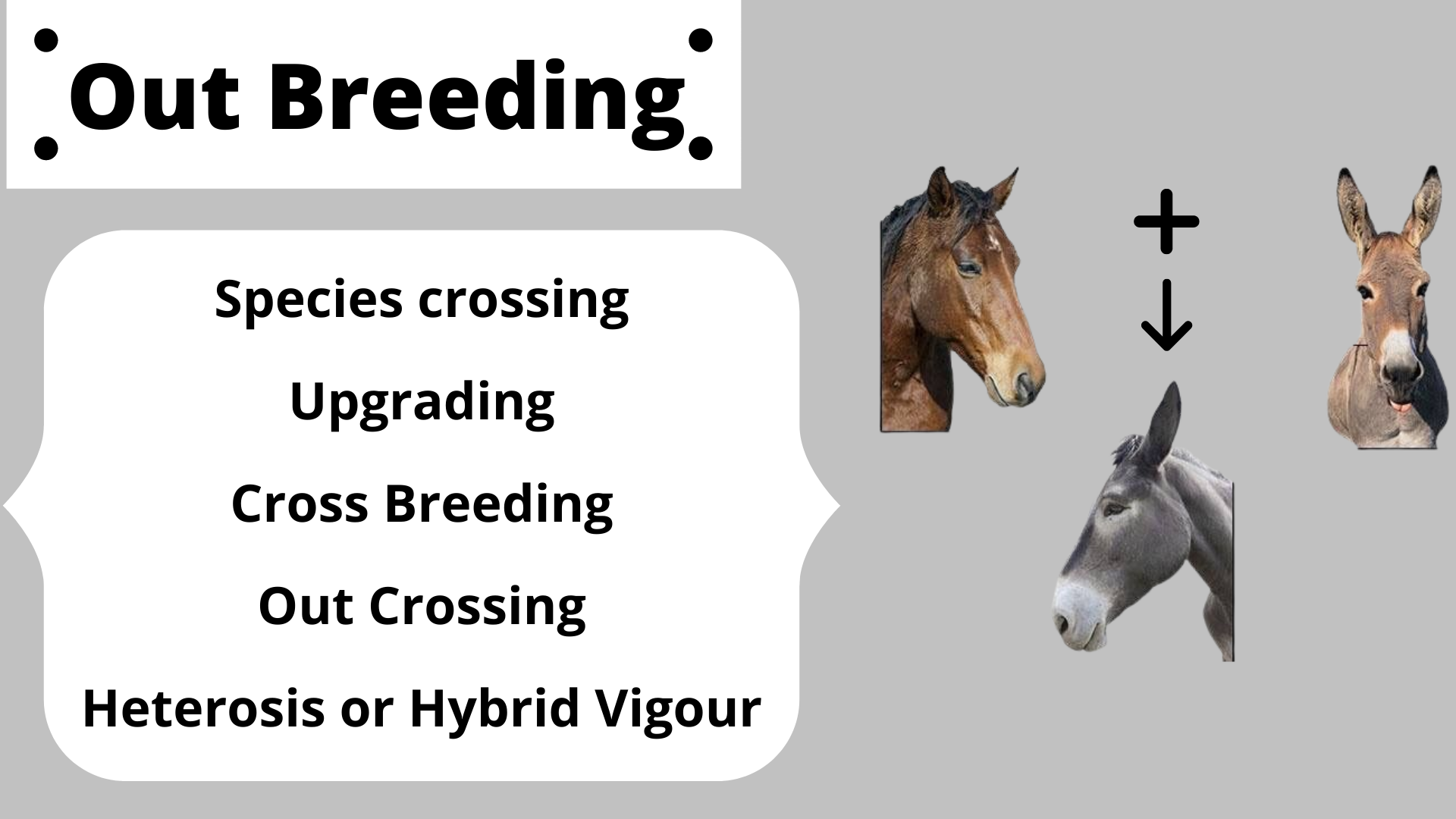This is the breeding of animals not related to each other. The forms of outbreeding to be discussed here are:

Species Crossing
This is the widest form of outbreeding and involves the crossing of different animal species, for instance, the donkey with the horse. This type of cross is of little practical use in the same stock industry.
Upgrading
Upgrading is the continual use – generation after generation – of male animals of a specific breed in a flock of another breed, e.g. the successive use of Merino rams on a hybrid flock, for the purpose of gradually building up a Merino Flock. Upgrading is the most economical way to build up an ordinary stock to the level of stud animals, or purebred animals. The rate at which purebred male animals will change the genetic construction of a flock is represented in the table below:
|
Generations |
Percentage replaced |
Percentage original blood |
|
1 |
50 |
50 |
|
2 |
75 |
25 |
|
3 |
87.5 |
12.5 |
|
4 |
93.75 |
6.25 |
|
5 |
96.87 |
3.12 |
|
6 |
98.44 |
1.56 |
|
7 |
99.22 |
0.78 |
Rate of blood change with upgrading
A relatively larger improvement takes place in the first few generations.
In South Africa, many karakul flocks were built up by the continual use of karakul rams in a flock of the Blackhead Persian breed.
Cross Breeding
The term is used for the crossing of purebred animals of different breeds. (Merino crossed with Dorset Horn, etc.). Such a cross usually results in a larger animal, greater vigour and a better breeding capacity. The amount of improvement in these characters however differs for different crosses. On the other hand, crossbreeding destroys the character of pure-breeding or homozygosis and crossbred animals (the products of crossbreeding) will, although they may be excellent individuals, not breed pure.
The advantages and use of cross-breeding are as follows:
- The application of hybrid vigour or Heterosis. It is applied in the production of meat, milk and sometimes wool. It is generally known that the best utilization of the Heterosis effect can be obtained in a system where the mother herself is a hybrid animal.
- The development of a new breed or breeds.
- With the development of the new breed, the two breeds chosen as parents are crossed. Sometimes another breed is also introduced in the crossing. The new breed is then developed by strict selection according to the aims of the new breed.
Out Crossing
This is the crossing of animals within a pure breed of animals, but which do not have a common ancestor or ancestors for many generations. Breeders often make use of this method to introduce new blood into a stud or flock and thus minimize inbreeding. The principle here is to find an animal better than the animals in the farmer’s own flock or stud.
Heterosis or Hybrid Vigour
The phenomenon of heterosis vigour is generally known. A classic example is that of a mule, which is harder than any of its parents. The chief characteristic of hybrids, in which they differ from purebred animals, is that they are more heterozygous in their genetic constitution and for this reason, hybrid vigour is ascribed to increased heterozygosis.
Mule = cross between a donkey and a horse.
Click on the link/s below to open the resources.
Click here to view a video that explains the beef cattle crossbreeding systems.
Click here to view a video that explains EPDS and genomics.